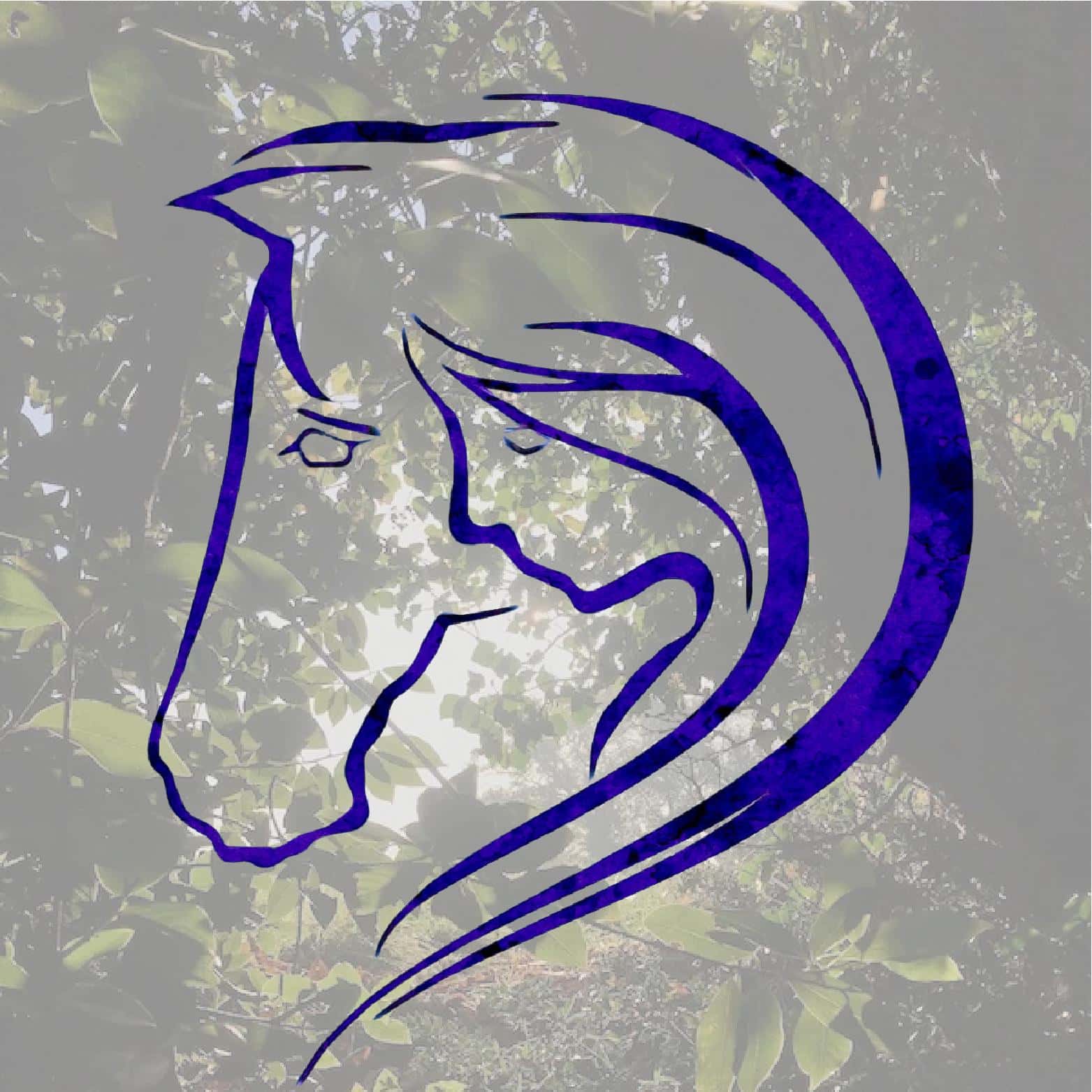The Self Supporting System
Deciding to go the holistic horse keeping route starts as acceptance of the journey. It is important to consider your intention before you start. If you have fears that certain things might happen, then they might well manifest. Especially if deep down you are looking for a reason not to change.
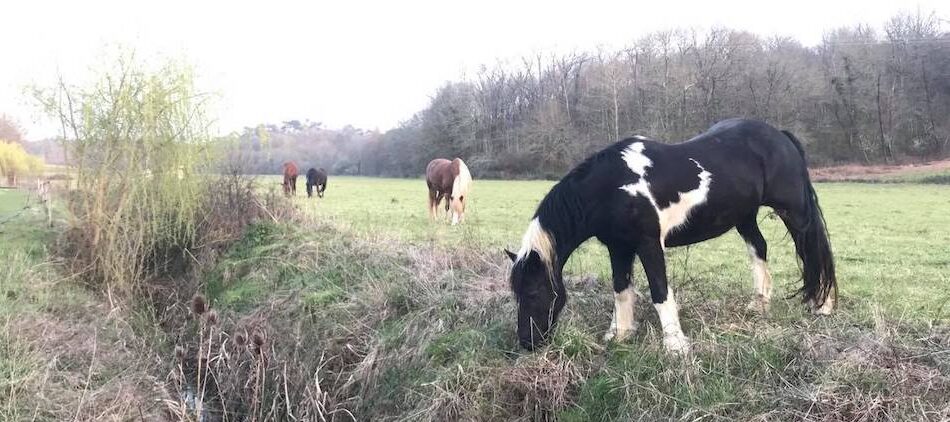
Things to Think About Before Going Holistic
One holistic aspect supports the next, and it can be complicated to try to pick and choose. For example it is not safe to have shod horses living together in a herd. A kick from a metal shod hoof has much more serious consequences than from a barefoot. Shod horses will also be in danger of getting their feet trapped in slow-feeder nets. This is helpful in that every positive step supports the next one, and evolution is always encouraged.
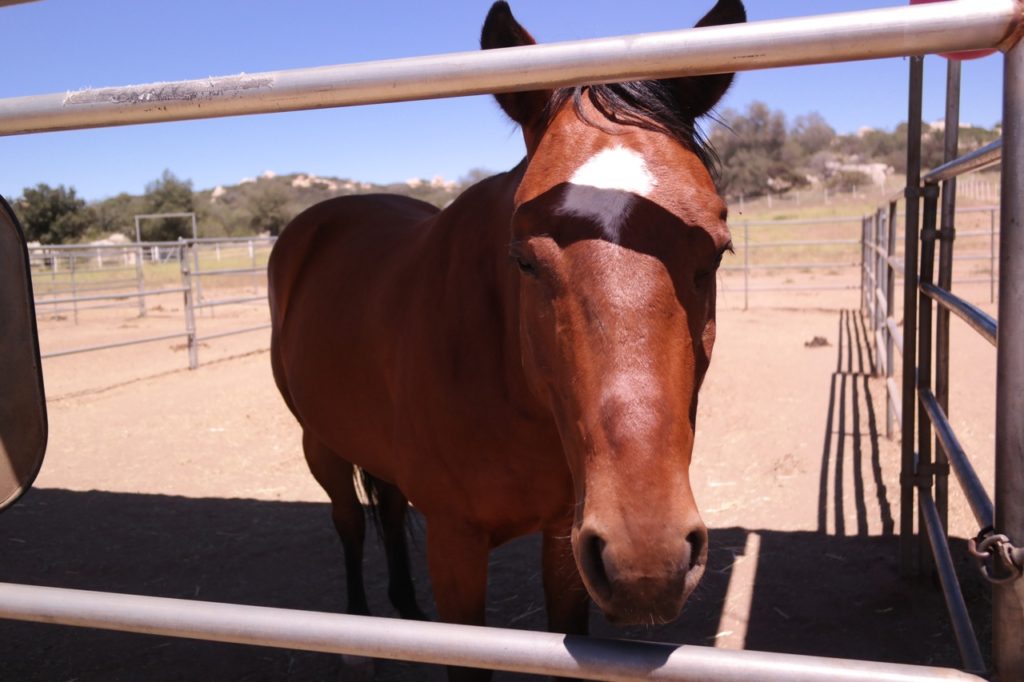
The more artificial a horse’s lifestyle is, the more dependent on humans the horses will become. This is a psychological dependence as well as a physical one. Horses know when they rely on you to turn up every day so they can eat and drink.
This is naturally stressful for them as horses are very independent in nature. When horses lose the ability to fend for themselves it is not generally healthy or beneficial for them or their human guardians.
It is also important not to judge yourself or your management practices harshly. Every situation is a constantly evolving reflection of who you are and how you are growing. It is unique and perfect, and the opportunities to grow are more clearly seen if this perspective is fostered. We are here to experience life. Seeing how our dreams can unfold with faith and vibrational focus is the best experience there is, and the joy is in the journey itself.
Long Term Dependence Is Not Ideal
When horses are stabled for long periods they can lose their physical resilience. Their metabolism changes and they become less able to adapt their body temperature to their environment. Their digestive system becomes vulnerable to parasites and their immune system can become depressed. If they are then overloaded with chemical treatments their liver function is compromised. Instead of being the norm, staying healthy becomes a struggle.
This is why it is not sensible or kind to impose a holistic lifestyle too suddenly on a stable-dependent horse. The rehabilitation process has to be taken at the right pace for each individual horse. On the other hand there are times when you have to let go and allow the horse to find their own coping mechanisms. Exposure is the natural way that this comes about, so use your intuition to find the optimum balance between support and space.
Why Horses Develop Digestive Issues
Horses have a digestive system that evolved to be working all the time. This is because they were living on grasslands where the grazing had low energy content. To survive they needed to be foraging most of the time. The majority of digestive system problems arise when people start to feed large amounts of high energy concentrates at limited times. The majority of metabolic problems arise when horses are eating inappropriate, high-sugar grass for too much of their time. The solution to both of these problems is to provide access to suitable, high-fibre forage 24/7.
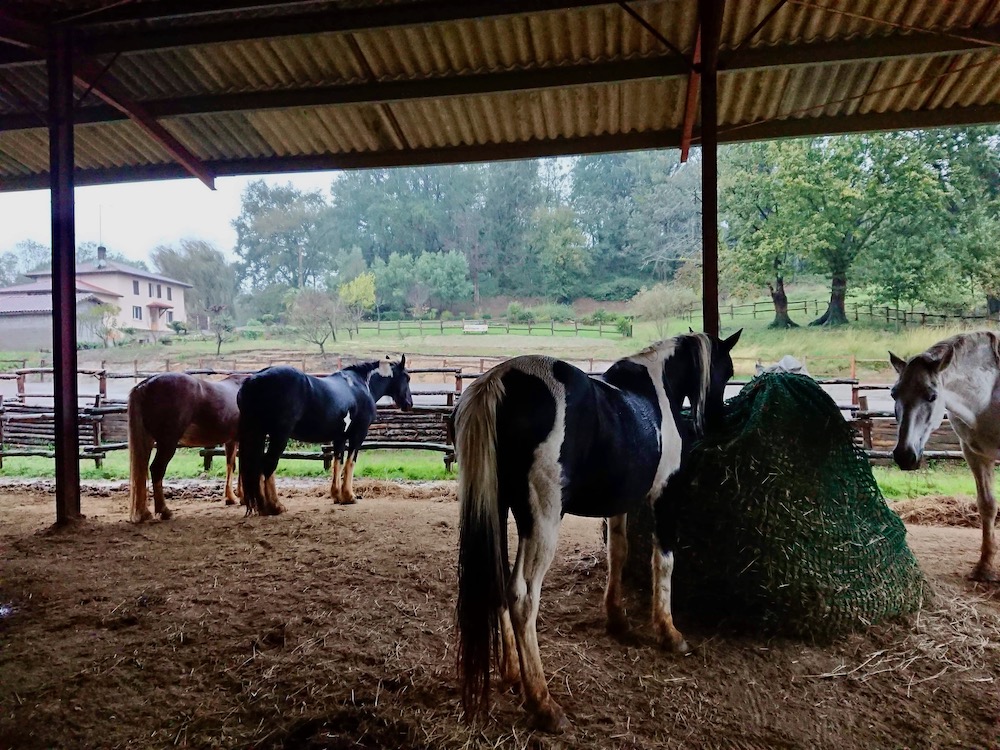
For larger herds this can be done as economically as possible using slow-feeder hay-nets and big bales of hay so there is very little waste.
A mixture of hay and well established, longer growth meadow grass with herbs is the ideal situation. Living grass contain more vitamins than hay, and herbs have numerous medicinal properties.
Maintaining a Healthy Weight
Horses can eat very short grass, and they tend to favour it as it contains more sugars than longer growth. For this reason it helps to establish a rotation system of some kind so that the grazing areas can recover regularly. Every horse has their optimum weight, and holistic horse keeping helps horses to stabilise at their optimum weight. For example horses who are living in a herd in a home range situation stay fitter without work than those living in a single paddock.
Cutting down their forage is not a good solution for keeping horses trim. It will only put their metabolism into starvation mode and increase the likelihood of health issues. The best ways to encourage a healthy weight holistically are:
- Work on providing a stimulating environment.
- Allow horses to stay rug free during the winter.
- Barefoot horses are healthier and able to stay grounded.
- Use two year old hay (if horses are overweight) and allow fields to grow longer grass.
- Feed only sugar free minerals and forage.
The Benefits of Movement
Giving your horse freedom full time is more possible than you might think and it has so many benefits. For example there is less mud in gateways when horses aren’t hanging about there all day wanting in to be fed. There is less work mucking out dirty little boxes every day. If we were to muck out eight boxes for our herd twice a day it would take far longer than the amount of poo picking necessary to keep the land clean. It is more pleasant for us and the horses are so much happier and healthier.
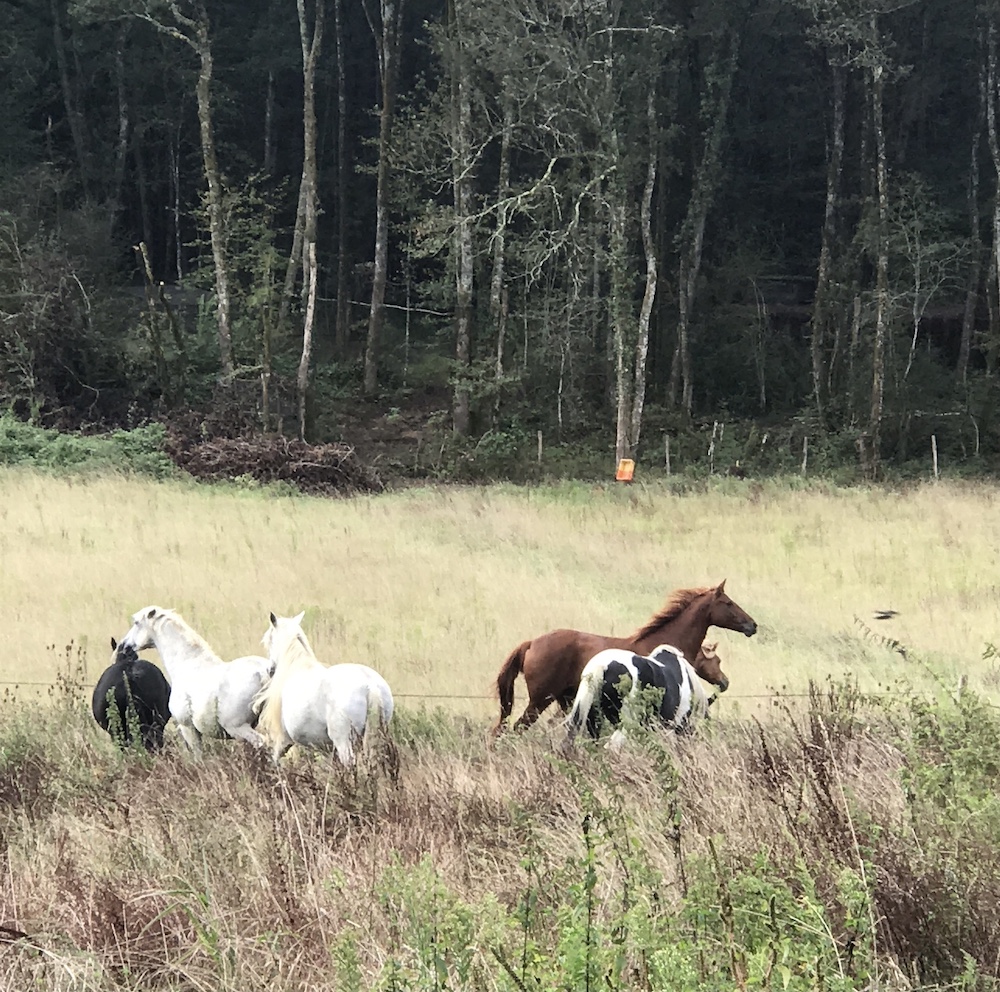
Movement stimulates horses lymphatic system so their legs stay clean and unfilled.
Foraging is natural for their digestive system so their gut is moving.
Clean air is healthy for their respiratory system so their breathing is clearer.
Movement stimulates their hoof pump mechanism so their feet stay healthy.
Most importantly herd life is stimulating and fun for horses, so they stay present and happy.
Providing Forage
Hay Stations
Even if you have enough land to rotate the horses so longer grass is always available, providing some dry forage is the perfect complement. Hay from a different source can have different minerals to avoid deficiencies. Horses seem to like being able to choose between grass and hay. Well designed hay stations are a great way to do this. To encourage more movement you can place your hay at the maximum distance from the water source with hard standing or sheltered.
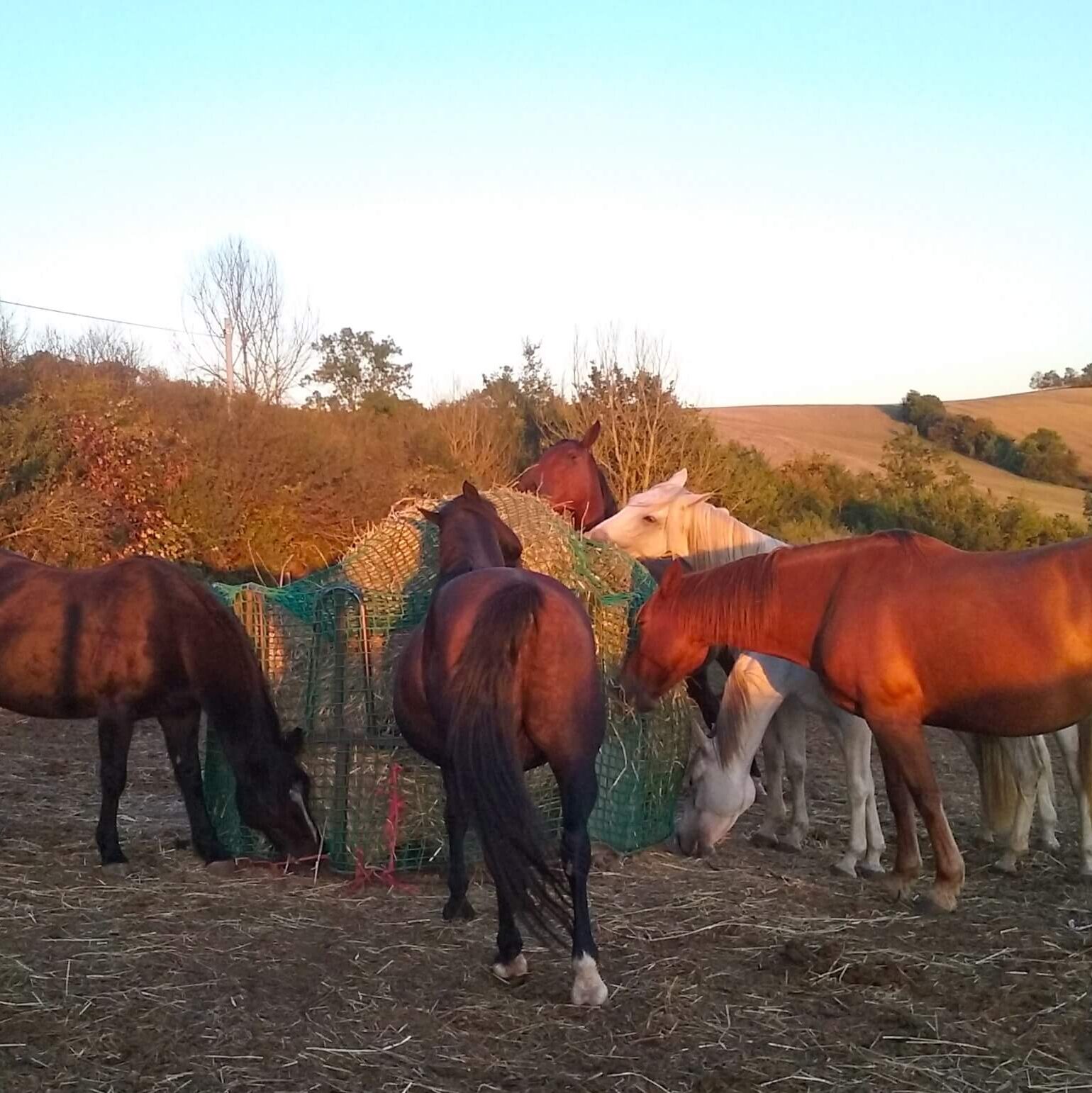
A good hay station will have some drainage and hard standing or shelter to provide the horses relief from the weather, both wet and heat. The hay needs to be easily accessible for all the herd members, watch the least dominant one to see that they are able to feed.
Think of how quickly the hay will be eaten if it isn’t under a roof as once it is wet it won’t be appetising or healthy for the horses longer than a few days. Big bales will stay more protected than loose hay as they are tightly packed.
There are numerous safe hay feeder options you can use with or without a net. The main purpose of these systems is to avoid wastage. A third of a bale will be wasted if there is no feeder/net or both to keep the horses from pulling too much out and trampling it. Always use small hole nets, no bigger than 4.5cm as the traditional haynet size of 15cm is dangerous for all horses.
Loose Hay
If you have less horses and/or more time you can put hay out along the lanes twice a day. This will encourage the horses to more, although it is much more labour intensive. It can be a nice way to reseed the land, and it might be less stressful for the more submissive horses. It is also a solution to not having hard standing or shelter where you can put hay.
Horse Friendly Shelter
Natural shelter, such as big hedges and trees can be very effective for horses. This is especially true in countries with less hot summers. If that is not adequate, providing a horse friendly shelter is important. Horses prefer to be able to see and hear as much as possible, so several obvious exits for a larger herd will encourage them to enter. If you are designing from scratch, think of a tunnel shape rather than a box.
The two most challenging weather for horses are rain plus cold wind and hot sun. A wet horse exposed to cold winds will cool down fast, and they need enough forage to eat to raise their temperature. Some solid shelter from the rain and wind is preferable, although horses ca be surprisingly clever at finding sheltered areas if they have a varied enough terrain.
Shelter from Heat
It is harder for horses to lose heat in hot weather, than warm themselves up. If the temperatures regularly go higher than 25°C they will need to be able to get into some shade. They will also use shade to avoid insects. Of course there are many considerations, such as humidity and available breeze. My herd choose this barn in the summer as there is more airflow and less flies.
The main thing is to observe the horses closely and get to know when they are comfortable. Many horse guardians are unaware that their horses are overheating in rugs or not getting enough forage, so try to be open minded and use all of your senses to listen. The signs are often subtle until there is a crisis situation that comes on suddenly.
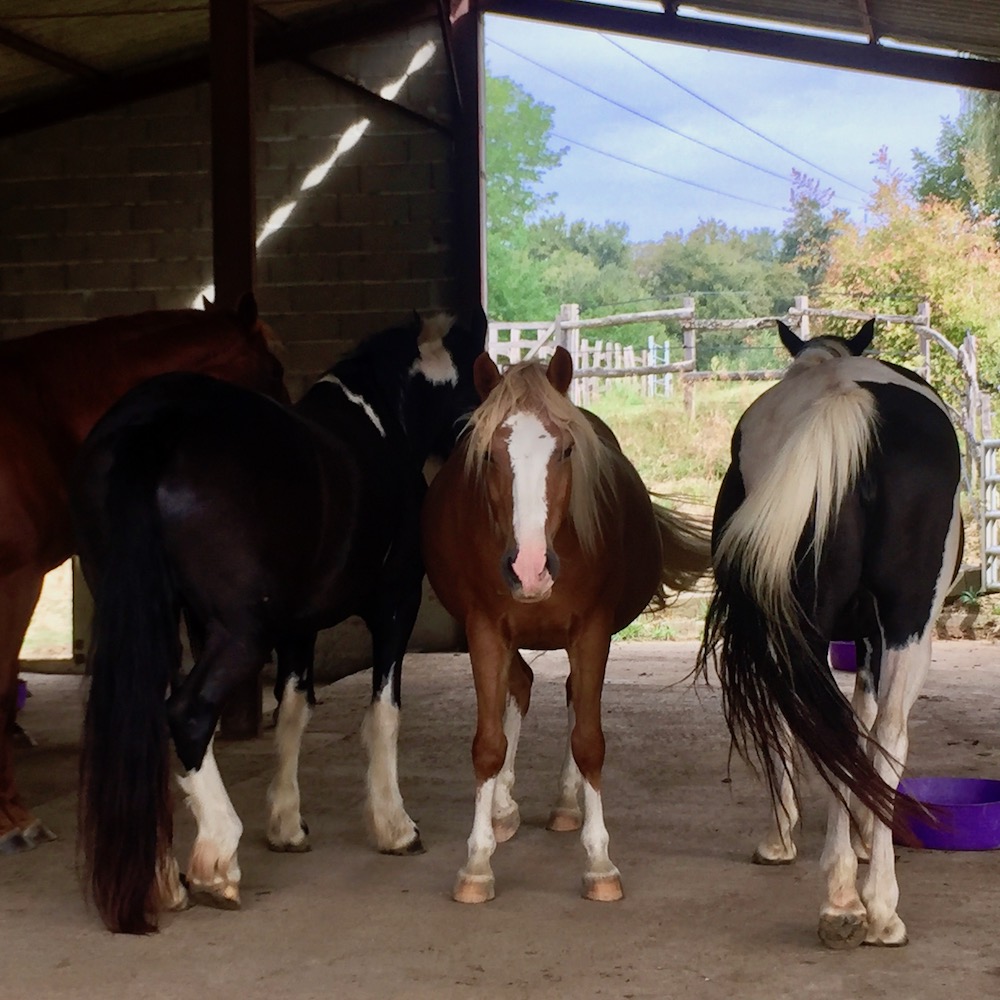
Herd Power
Social interaction cannot be restricted from a naturally gregarious animal like a horse without causing adverse behavioural changes. Unfortunately for horses our convenience or fear of injury often makes this acceptable. Once you decide that you are ready to experience the true personality of a horse, allowing that they must be able to openly interact with each other is an important step.
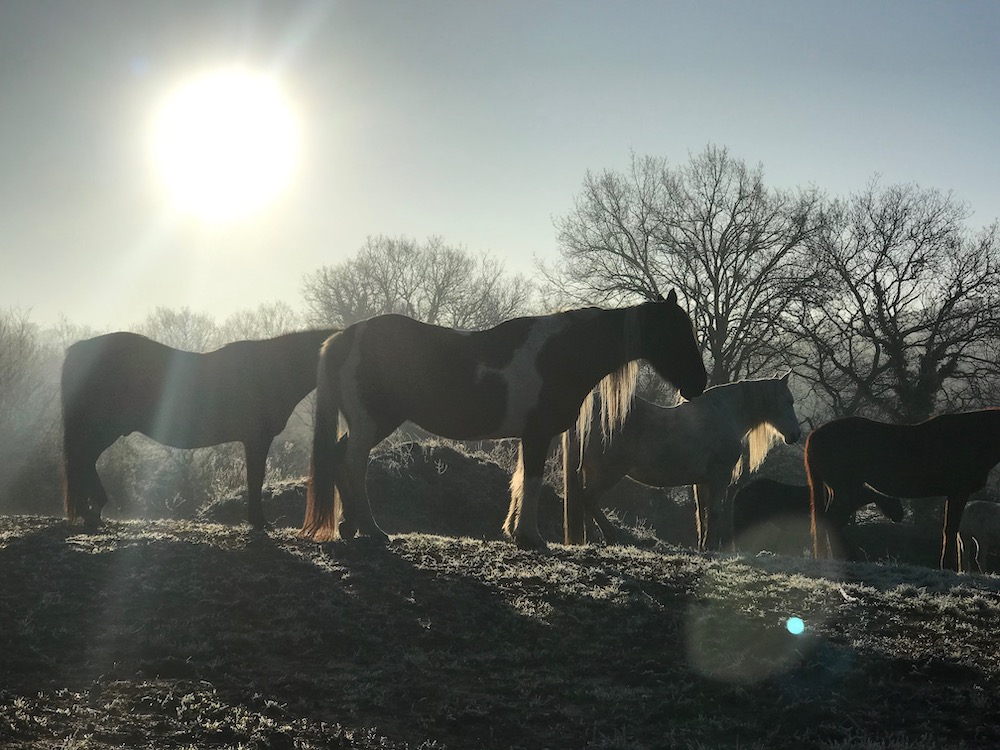
Horses living in a permanent herd form a particular ‘herd energy’ A permanent herd means that the core of the herd is stable, so individual members might come and go as they would in the wild. If horses are removed every day and put into individual stables, the same herd energy doesn’t seem to form. This herd energy is similar to a shoal of fish, and there is a communal mind.
Horses who live within this energetic bubble are actually more stable psychologically, contrary to popular belief. They are more independent and able to leave the herd for reasonable periods of time. Horses who develop ‘herd-bound’ behaviour have usually been exposed to isolation or some form of segregation in the past where their needs were not met. They then develop traumatic association with being alone and are over-attached to the herd. The healing power of such a herd is enormous. For other horses and for humans.
Some Holistic Answers
Geldings and mares can’t mix because they might injure each other
In general geldings and mares mix very well. This is because the herd will find a balance more easily when there are both male and female energies. Groups of geldings tend to be less grounded and are more prone to injury if anything. Horses benefit from social interactions just as we do and it is a pity when our prejudices interfere with their relationships. All horses are unique, and need to be allowed to find their own friendships.
Keeping certain horses apart because they appear to dislike each other
Often ‘enemies’ are formed over stable walls. This is a common result of frustrations and neurosis which develop when horses are living artificially. As soon as horses are allowed to live together in a herd, the interactions often change completely. Antagonists will avoid each other or might even become friends. Space and stimulus are great balancers.
My horse always gets bullied or bullies the others
There will always be more or less dominant members in a herd, this doesn’t make the herd less harmonious. Often horses will reflect the energies of their owner(s). So if there is disharmony, it can help to look at the human relationships and see if there is something to heal.
My yard doesn’t allow horses to mix
Horse guardians who don’t make the yard rules do seem to have less freedom. All things have a vibrational root however, and resonating with the preferred outcome is where the power is. If you believe in you mind that the situation can change then it can.
